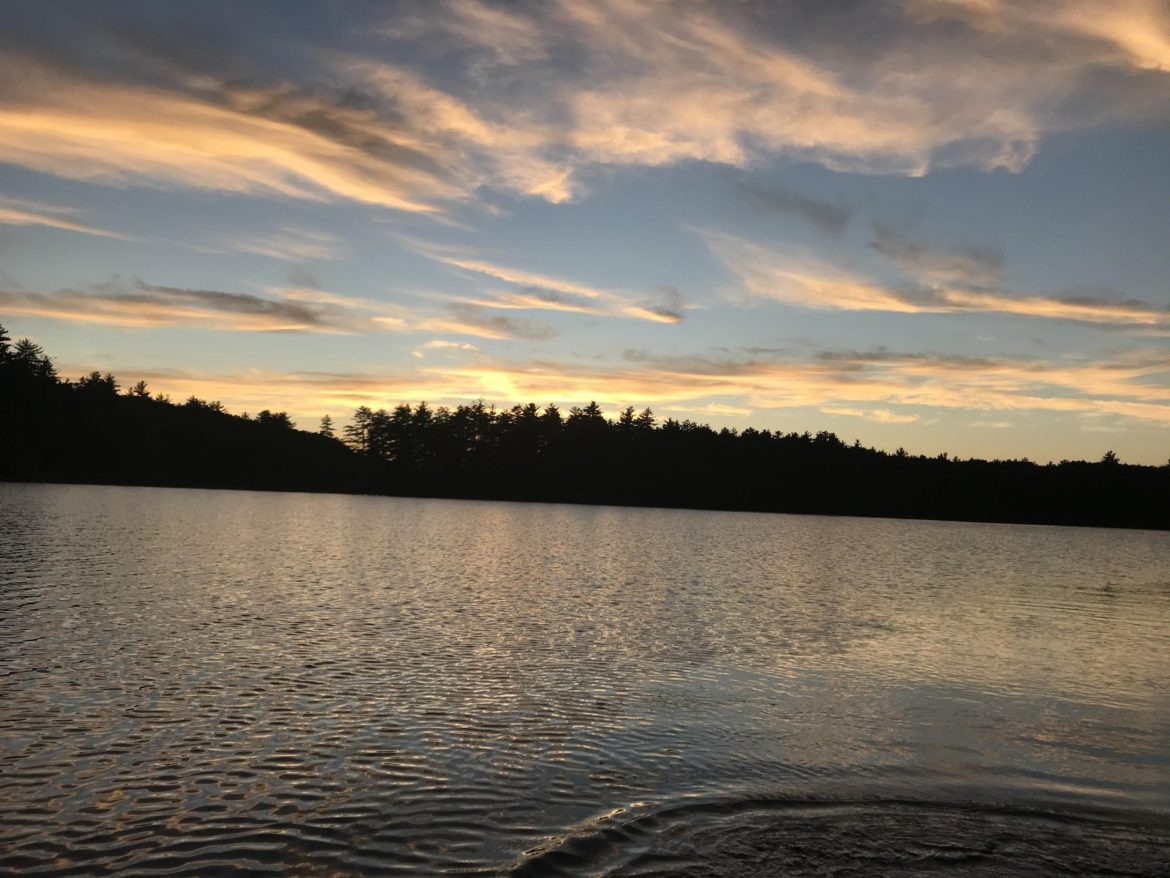WRITING ON THE FLY, By GEORGE LISET
The lazy, hazy days of summer are here. There has not been enough rain to give a hummingbird a drink, and even the fish are thirsty. Most small streams are just a trickle, which means that most trout have “left the building.” The trout have headed for the deeper spring fed pools or the larger bodies of water.
Having fished many of the local streams, I know where the trout are holding during this time of year and in this type of weather. Since I “Catch and Release,” I know that on one hand it would stress the fish out to fish for them, and on the other, it would be like “shooting fish in a barrel” as the saying goes. This is the time I head for the nearest pond.
New Hampshire is lucky to have hundreds of small ponds, each with their own unique characteristics. The New Hampshire Fish and Game website has a list of water to fish: https://wildlife.state.nh.us/fishing/where-fish.html
Another great resource is “The Atlas of New Hampshire Trout Ponds by Northern Cartographic.”
There are a few considerations when choosing a pond to fly fish. Time is an important one. I have two or three nice ponds that I can fish within two or three miles of my house that allow me to get a line in for an hour here and there as my schedule dictates. This is really convenient and a benefit to living in New Hampshire.
Access is another factor in choosing your pond. Can you drive up and park and throw your canoe in, or is there a hike required? Can you fish from shore or do you need to use a float tube or canoe? Both of these also get back to factor number one, how much time do you have?
The next factor to consider is what type of fish are you fishing for? Ponds that are stream fed are probably stocked with warm water fish such as Bass, Bluegills and my favorite Sunfish. This is to just name a few. I just recently checked the water temperature of a few of my local streams and they were up to 78 degrees.
Ponds that are spring fed are usually deep and stocked with trout, since they thrive in the cold water. Many of these spring fed ponds were former granite pits that eventually flooded. Stonehouse Pond in Barrington comes to mind.
Another consideration is people, or no people? Most fly fishers enjoy the solitude of the sport. Although they don’t mind sharing, it is nice sometimes to have a pond to yourself. It is easier to find that quiet up north, a little harder here on the Seacoast. Speaking of Stonehouse Pond, a number of years back, a fly fisher in a float tube was out in the middle of the pond when his tube sprang a leak. He tried to make it to shore but to no avail. The fisherman started yelling for help. Fortunately a rock climber heard him and jumped in to rescue him. He was lucky. So sometimes company is good.
Not to make your choice more complicated, but do you want to fish a dry fly or a wet fly? As I mentioned, each pond has its unique trait. If you are fishing out of a canoe or float tube, you should use a longer fly rod like a 9’6” or a 10’. You should also use a longer 12’ leader and a finer tippett, especially if you are fishing dry flies.
If you don’t see any fish rising, or it is in the middle of the day, it may be time to put on your sinking line. I’ll share a secret that an old-time fly fisher shared with me. Tie on a Maple Syrup Fly in a size 16 or 18. They are easy to tie and are very effective.
Fishing ponds gives you flexibility and variety and are a real change of pace. It also might be an excuse to get new equipment! Just saying.
George Liset of Dover is an outdoor writer and avid fly fisherman who shares insights of his time on the water exploring New Hampshire streams and rivers as well of those around New England. George is a graduate of Wheaton College, Illinois, and the University of New Hampshire.





